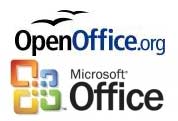A group of software developers has successfully created a program that enables Microsoft Office to handle OpenDocument format files.
 This move is seen as a step towards bridging the compatibility gap between desktop software applications.
This move is seen as a step towards bridging the compatibility gap between desktop software applications.
The developers began researching and developing this program over a year ago, and the initial testing phase has just concluded.
Gary Edwards, a software engineer from the OpenOffice.org project and founder of the OpenDocument Foundation, stated that this new software is designed to allow Microsoft Office to save files in the OpenDocument (ODF) format.
“The ODF add-in will be installed in the File menu of Microsoft Office, similar to the ‘Open, Save, Save As’ functions, allowing documents to be saved in the standard ODF format just like saving files in MS Office format,” Edwards affirmed.
If this software is released to the market, it would be an ironic twist in the ongoing battle between Microsoft and OpenDocument supporters, especially since the OpenOffice format has garnered significant user support.
Microsoft will not support the OpenDocument format in Office 2007. According to Microsoft’s leadership, this decision is based on insufficient user demand for such a feature and the perception that OpenDocument lacks many features compared to MS Office.
Meanwhile, analyst Stephen O’Grady believes that the introduction of a third-party application allowing Microsoft Office to support OpenDocument will provide a new impetus for OpenDocument.
In other words, the add-in allowing MS Office to support OpenDocument will be welcome news for those who frequently use software from Microsoft’s competitors.
Alan Yates, Microsoft’s Chief Information Officer, stated that the company did not collaborate with the developers of this new application. However, Yates also mentioned that he was not surprised by the emergence of this type of software.
“We always hope that third-party companies will create tools that facilitate conversion from one format to another,” Yates confirmed.
“Previously, we had not seen any tools like this. But now it exists, and it can be considered evidence that technological solutions may help address user demands for compatibility between software applications.”
Hoàng Dũng




















































